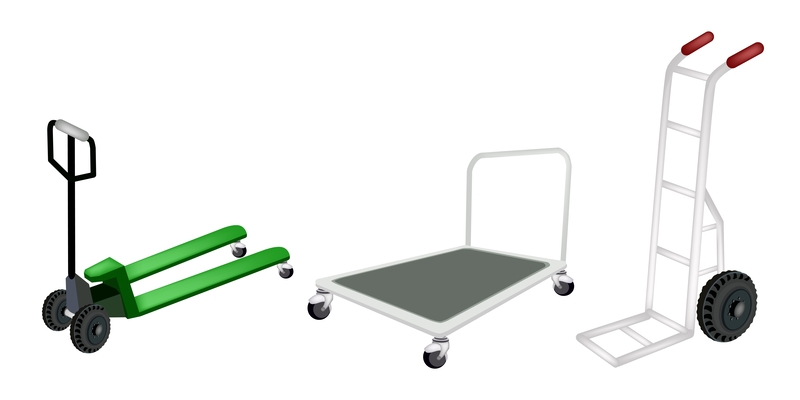How to Get the Most Out of Storing a Freezer Between Uses
Storing a freezer between uses may seem straightforward, but it requires careful planning and proper maintenance to ensure its longevity and efficiency. Whether you are a seasonal user, moving to another home, or temporarily vacating your property, knowing how to get the most out of storing a freezer between uses can make a significant impact on its performance and lifespan. In this comprehensive guide, we'll break down every step required to prepare, maintain, and store your freezer properly.
Why Proper Storage Matters for Freezers Between Uses
When you plan to store a freezer unused for any period, following the right steps is crucial. Freezers are valuable appliances that, if mishandled, can develop unwanted odors, mold growth, and mechanical issues that may impact their cooling performance and overall durability.
- Prevents Mold & Mildew: Storing your freezer correctly avoids moisture build-up and growth of harmful fungi inside the cabinet.
- Saves Time & Money: A well-maintained freezer requires fewer repairs, lasts longer, and reduces long-term costs.
- Easy Recommissioning: Proper storage allows you to reuse your freezer quickly without the need for laborious cleaning and repairs.

Essential Steps to Storing a Freezer Between Uses
Follow these actionable steps to ensure your freezer stays in top condition during periods of inactivity.
1. Empty and Defrost the Freezer
The first and most important step in any guide to storing a freezer between uses is to remove all food items. Prolonged storage of food inside a turned-off freezer can result in unpleasant odors, spoilage, and persistent stains.
- Dispose of perishables: Remove all food, especially items that may leak or spoil quickly.
- Defrost completely: Unplug the freezer and leave the door open. Place towels underneath to soak any water from melting ice.
- Clean and dry: Once defrosted, remove residual water using a dry cloth. Ensure all moisture is removed to prevent mold growth.
2. Deep Clean the Interior and Exterior
To prevent odors and mold while storing your freezer unused, deep cleaning is essential.
- Wash all surfaces: Use a mild detergent or a mixture of baking soda and water to clean the interior compartments, shelves, and drawers.
- Clean exterior: Wipe the outside with a damp cloth, paying attention to handles and gaskets.
- Dry thoroughly: Leave doors open until every surface is dry. Zero moisture is the goal.
3. Protect Against Mold and Odors
Moisture is the enemy when storing a freezer between uses. Even traces of dampness can cause smelly bacteria and mold to flourish. Here's how to guard against it:
- Leave the Door Ajar: Prop the door open using a soft object, such as a rolled-up towel or a freezer-safe spacer. This allows air circulation and prevents musty smells.
- Baking Soda Solution: Place an open box of baking soda or activated charcoal inside. These substances absorb residual odors and humidity.
- Check Drip Tray: Some freezers have a drip tray underneath. Clean and dry it completely to avoid stagnant water build-up.
4. Find the Right Storage Location
Where you store your unused freezer can significantly impact its condition. To optimize your freezer storage between uses:
- Keep it indoors, if possible: Garages, basements, or storage rooms are ideal. Avoid areas prone to extreme temperature changes.
- Avoid direct sunlight: Exposure to sunlight may damage the exterior and plastic parts.
- Ensure ventilation: There should be enough space around the freezer for air to circulate and prevent overheating when reused.
- Stable and level surfaces: Place your freezer on a flat surface to avert compressor or door alignment issues.
5. Secure Cords and Components
If your freezer will be stationary for a while, protect its parts and accessories:
- Wrap power cords: Prevent tangles or damage by coiling the power cord neatly and securing it with a twist tie.
- Remove shelves and drawers (if possible): Store these separately or secure them within the unit to avoid jostling and cracking.
- Label loose parts: Place any screws, clips, or smaller parts in a labelled bag within the freezer cavity.
Optimizing Long-Term Freezer Storage for Maximum Efficiency
Taking extra measures for long-term storage of a freezer ensures that it runs smoothly once you're ready to use it again. Here are some advanced tips for extended periods between uses.
Climate Control and Environmental Considerations
- Humidity Control: Too much humidity can create rust, corrosion, and electrical failures. Use dehumidifiers or silica gel packs if storing in damp basements or garages.
- Temperature Fluctuations: Ideally, the storage area should be kept between 50?F and 80?F (10?C - 27?C). Extreme cold or heat might crack plastics and damage seals.
Check Freezer Regularly During Storage
Every month or so, inspect your unused freezer to check for:
- Moisture build-up inside the freezer cavity or under the unit.
- Odors or signs of mold/mildew.
- Cracks, rust, pest infestation, or water damage in the storage area.
Regular checks can catch small problems before they become major repairs.
Consider Powering On Periodically
Some users opt to plug in and run the freezer briefly every few months to keep the compressor lubricated and ensure all parts are functioning.
- Plug the freezer in for 1-2 hours.
- Check for normal cooling function and listen for unusual noises.
- Unplug, wipe away any condensation, and resume storage.
Though optional, this step can help maintain the mechanical integrity of the freezer if stored for over 6 months.
Prepping Your Freezer for Reuse After Storage
When it's time to bring your freezer back into service, follow a methodical approach to guarantee food safety and optimal performance.
- Inspect Thoroughly: Look for dust, insects, or signs of humidity inside and outside.
- Wipe Down Again: Clean all inner surfaces, even if they look spotless -- this removes any residual dust or odors.
- Reconnect Power Carefully: Plug the freezer in and confirm the power cord and plug are undamaged.
- Test Cooling: Allow the freezer to run empty for 12-24 hours before stocking it with food. Check for consistent temperature throughout.
- Stock Gradually: Reintroduce food in small batches to avoid overloading the cooling system initially.
Addressing Common Issues When Reactivating a Stored Freezer
- Odors: If mustiness remains, try wiping with a vinegar-water solution and air out before use.
- Noise: Light rattling can result from shifted internal components; check and re-seat trays and shelves.
- Frost Buildup: Ensure the door gasket seals properly and the door was not left open during storage.
Frequently Asked Questions on Storing a Freezer Between Uses
Can I Store My Freezer Unplugged?
Yes. If unplugged, ensure it is completely clean and dry, and always leave the door open to prevent odors and mold.
How Often Should I Check My Freezer During Storage?
Check at least once a month for moisture, pests, or mechanical issues. More frequent checks are recommended in damp environments.
What If My Freezer Smells After Storage?
Clean with baking soda or vinegar solutions. If the odor persists, consider placing activated charcoal or coffee grounds inside the freezer compartment for up to 72 hours with the door closed, then ventilate thoroughly.
Is It Safe to Store a Freezer in a Garage?
Yes, provided the temperature remains stable and it is protected from excess humidity and direct sunlight. Consider a garage-rated freezer for best results.

Best Practices for Freezer Storage and Maintenance Between Uses
- Defrost and dry before storage
- Leave the door open using a spacer for ventilation
- Store in climate-controlled, shaded, and dry areas
- Check periodically for signs of issues
- Clean and run the freezer briefly every 6 months (if possible)
- Use odor absorbers like baking soda or activated charcoal
- Label and secure all detachable parts
By implementing these steps on how to get the most out of storing a freezer between uses, you can ensure your appliance remains reliable, safe, and efficient for years. Freezers represent a considerable investment, and a little care during downtime minimizes costly repairs and hassle upon reactivation.
Conclusion: Extending the Life of Your Freezer Between Uses
Proper freezer storage between uses is as important as using it correctly. By cleaning, drying, ventilating, monitoring, and storing in a controlled environment, you not only extend your freezer's lifespan but also maintain food safety and appliance efficiency. Follow these comprehensive steps to enjoy peace of mind and maximize the value of your freezer, no matter how often you use or store it.
For more tips and expert advice on freezer maintenance, appliance storage, and maximizing household efficiency, stay tuned to our blog and share your own experiences with freezer storage below!



